
All categories
Featured selections
Trade Assurance
Buyer Central
Help Center
Get the app
Become a supplier

(1419 products available)
































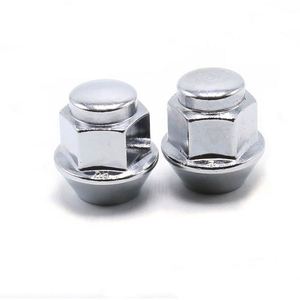
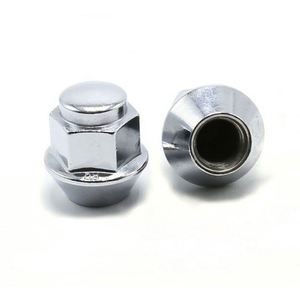
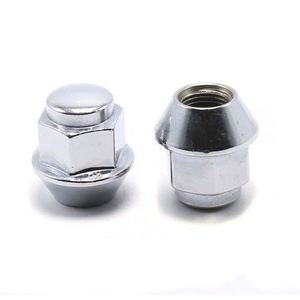
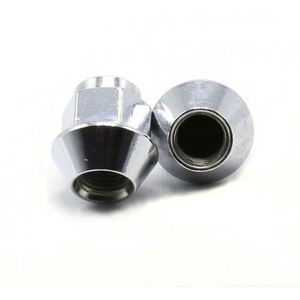
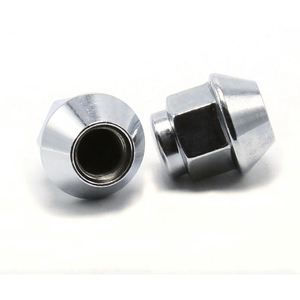






12x1.25 lug nuts are a common type of lug nuts used to secure wheels on vehicles. They come in various types, each designed to fit different vehicles with specific requirements. The most common types of lug nuts include:
There are also several other specialized lug nuts, such as impact socket lug nuts designed to withstand high torque from impact wrenches and thin wall lug nuts for tight clearance situations. When choosing lug nuts, it's essential to select the type that matches the vehicle's specifications and the wheel design to ensure safety and performance.
Thread Size:
This indicates the diameter and pitch of the lug nut's thread. A ""12x1.25"" lug nut has a diameter of 12 millimeters with a thread pitch of 1.25 millimeters. It suggests that the lug nut's threads are spaced 1.25 millimeters apart.
Seat Type:
12x1.25 lug nuts have two common seat types, cone and flat. The cone seat lug nut features a cone-shaped bottom, allowing it to fit snugly against the wheel hub. On the other hand, flat-seat lug nuts have a flat bottom.
Length:
12x1.25 lug nuts come in various lengths, usually measured in millimeters. The length is the distance from the top of the lug nut to its bottom. Common lengths for these lug nuts range from 25 to 50 millimeters. The length impacts the lug nut's engagement with the wheel stud.
Material:
12x1.25 lug nuts are typically made from steel or alloy materials. Steel lug nuts are strong and durable, making them suitable for heavy-duty applications. On the other hand, alloy lug nuts are lightweight and corrosion-resistant, offering better aesthetics and performance.
Finish:
12x1.25 lug nuts come in different finishes that affect their appearance and corrosion resistance. Common finishes include chrome plating, zinc coating, and black oxide. Chrome plating gives the lug nuts a shiny and attractive appearance, while zinc coating provides excellent corrosion resistance.
Torque Specification:
This indicates the recommended torque value that should be applied when tightening the lug nuts. It is usually measured in foot-pounds or Newton-meters. For 12x1.25 lug nuts, the torque specification commonly ranges from 80 to 120 foot-pounds (108 to 163 Newton-meters). Proper torque ensures even wheel mounting and prevents lug nut failure.
Lug nut maintenance is essential for safety and performance. Here are some tips for maintaining 12x1.25 lug nuts:
Regular Inspection:
The lug nuts should be inspected periodically to identify any signs of wear, damage, or rust. Early detection aids in timely replacement of damaged or worn-out lug nuts, thereby preventing wheel detachment or accidents caused by loose nuts.
Proper Torque:
Using a torque wrench, lug nuts should be tightened to the specified torque value. Over-tightening or under-tightening can lead to lug nut damage or wheel stud failure.
Cleaning:
12x1.25 lug nuts should be cleaned regularly to remove dirt, grease, and road debris. A wire brush or soft cloth can be used for cleaning. Avoid using abrasive materials that can damage the lug nut's finish.
Lubrication:
Occasionally, a thin layer of lubricant can be applied to the lug nut threads. Lubrication aids in smooth tightening and prevents rust or corrosion.
Replacement:
When worn out, damaged, or rusted lug nuts should be replaced promptly. Always use lug nuts that conform to the vehicle's specifications in terms of size and material. When replacing lug nuts, always replace them in sets to maintain even wheel mounting.
Storage:
If lug nuts are not used, they should be kept in a clean, dry, and rust-free environment. Avoid exposing them to extreme temperature, moisture, or harsh chemicals.
When choosing suitable lug nuts for a business, consider the following factors:
Material:
As seen earlier, lug nuts come in two main materials: steel and chrome vanadium. Each has its pros and cons. Steel lug nuts are strong and resistant to damage. On the downside, they are heavy. Lug nuts made from chrome vanadium are resistant to rust and corrosion. They are also strong and durable.
Finish:
The finish of the lug nut affects the appearance and function. Choose a lug nut with a finish that matches the look of the vehicle. The common types of finishes include raw, zinc and chrome plating. Zinc plating protects the lug nut from corrosion. Chrome plating, on the other hand, enhances the appearance of the lug nut.
Thread size and pitch:
Always check the thread size and pitch before purchasing lug nuts. The lug nuts should be compatible with the vehicle's wheel studs. This ensures a secure fit. The 12x1.25 lug nuts have a thread diameter of 12 millimeters and a thread pitch of 1.25 millimeters.
Type:
The type of lug nut to purchase depends on the needs of the target market. Different types of lug nuts suit different applications. The common types include standard, locking and mag shank lug nuts. Standard lug nuts are the most common. They are suitable for many vehicles. Locking lug nuts prevent theft of the wheels and tires.
Size:
Lug nuts come in various sizes. Choose a size that suits the wheel size of the target market. Large vehicles, such as trucks, need larger lug nuts. This is because they experience more stress and strain on the wheels.
Quantity:
Most vehicles require 20 to 24 lug nuts. Therefore, it's best to purchase lug nut sets that come in multiples of 4 for resale.
Replacing 12 x 1.25 lug nuts is part of wheel maintenance that is very easy to do. Below is a step-by-step guide on how to DIY and replace 12 x 1.25 lug nuts:
Tools needed
Step-by-step guide
Q1: Are 12x1.25 lug nuts standard?
A1: No, 12x1.25 lug nuts are not standard. Vehicles with metric M12 (12mm) fasteners usually use M12x1.25 lug nuts. The thread pitch, which is the distance between threads, is measured in millimeters.
Q2: Can 12x1.25 lug nuts be used on other vehicles?
A2: Only vehicles with compatible M12x1.25 specifications can use 12x1.25 lug nuts. Always confirm a vehicle's specifications before purchasing lug nuts.
Q3: How do you know if lug nuts are compatible?
A3: Compatibility requires matching the size, thread type, and pitch of a vehicle's wheel stud. This information is often found in the owner's manual or service provider.
Q4: What could happen if incompatible lug nuts are used?
A4: Incompatible lug nuts can cause damage to wheel studs, leading to unsafe driving conditions. In severe cases, it can result in wheel detachment.
Q5: Are all 12x1.25 lug nuts the same?
A5: No, 12x1.25 lug nuts are not the same. They vary based on design, material, and finish. Buyers should consider the application, level of security, and corrosion resistance.